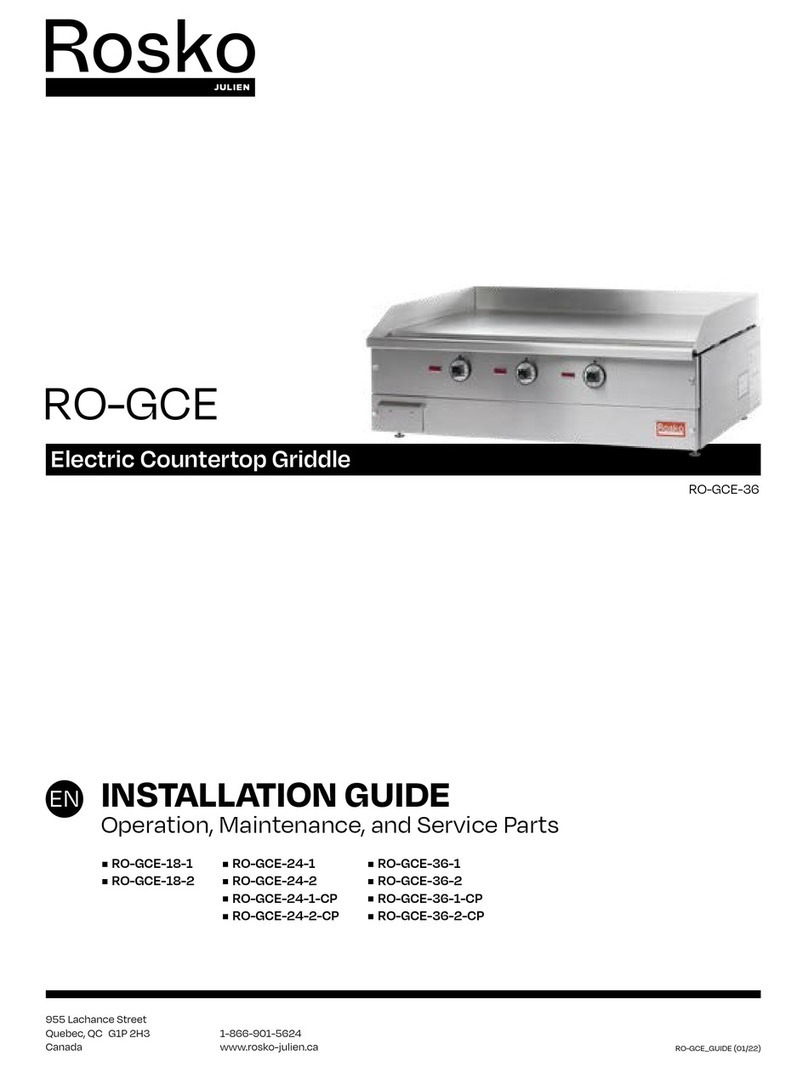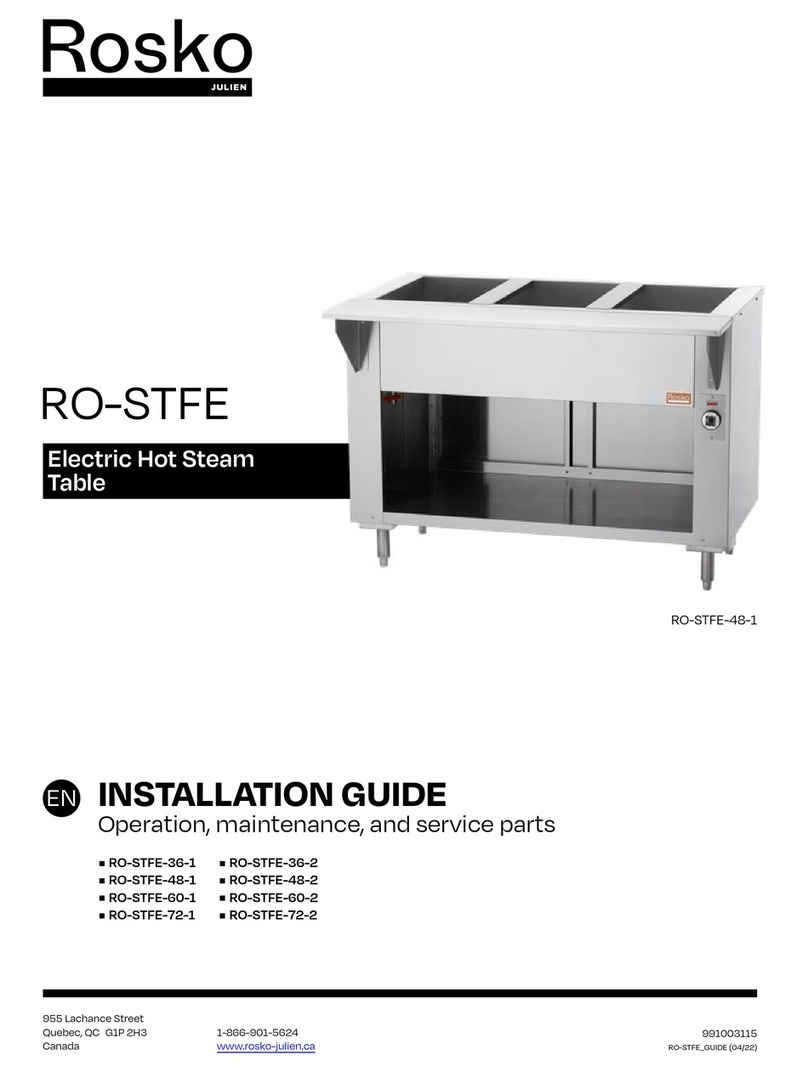
3RO_FFG_GUIDE (08/22)
CONTENTS
1. WARNINGS AND CAUTIONS . . . . . . . . . . . . . . . . . . . . . . . . . . . . . . . . . . . . . . . . . . . . . . . . . . . . . . . . . . . . . . . . . . . . . . . . . . . . . . . . . . . . . . . . . . . . . . 2
2. PLANNING AND INSTALLATION . . . . . . . . . . . . . . . . . . . . . . . . . . . . . . . . . . . . . . . . . . . . . . . . . . . . . . . . . . . . . . . . . . . . . . . . . . . . . . . . . . . . . . . . . . . 4
2.1. CLEARANCES ........................................................................................................ 4
2.2. AIR SUPPLY AND VENTILATION ....................................................................................... 4
2.3. LEG INSTALLATION ................................................................................................... 6
2.4. ATTACHMENT ........................................................................................................ 7
2.5. CONNECTION ........................................................................................................ 8
2.6. GAS PRESSURE CHECK .............................................................................................. 9
3. OPERATION . . . . . . . . . . . . . . . . . . . . . . . . . . . . . . . . . . . . . . . . . . . . . . . . . . . . . . . . . . . . . . . . . . . . . . . . . . . . . . . . . . . . . . . . . . . . . . . . . . . . . . . . . . . . . 10
3.1. FILLING .............................................................................................................. 10
3.2. IGNITION ............................................................................................................ 11
3.3. CLOSING ............................................................................................................ 12
3.4. DRAINAGE ........................................................................................................... 12
4. CLEANING . . . . . . . . . . . . . . . . . . . . . . . . . . . . . . . . . . . . . . . . . . . . . . . . . . . . . . . . . . . . . . . . . . . . . . . . . . . . . . . . . . . . . . . . . . . . . . . . . . . . . . . . . . . . . . . 13
4.1. SURFACE CLEANING................................................................................................. 13
4.2. ACCESSORY CLEANING ............................................................................................. 13
4.3. FILTRATION .......................................................................................................... 13
4.4. TANK CLEANING ..................................................................................................... 14
5. PREVENTIVE MAINTENANCE . . . . . . . . . . . . . . . . . . . . . . . . . . . . . . . . . . . . . . . . . . . . . . . . . . . . . . . . . . . . . . . . . . . . . . . . . . . . . . . . . . . . . . . . . . . 15
5.1. MINIMUM INSPECTION .............................................................................................. 15
5.2. PROFESSIONAL INSPECTION ....................................................................................... 15
6. TROUBLESHOOTING . . . . . . . . . . . . . . . . . . . . . . . . . . . . . . . . . . . . . . . . . . . . . . . . . . . . . . . . . . . . . . . . . . . . . . . . . . . . . . . . . . . . . . . . . . . . . . . . . . . . . 16
6.1. GENERAL TROUBLESHOOTING ..................................................................................... 16
6.2. TROUBLESHOOTING CHART ........................................................................................ 17
7. SERVICE PARTS . . . . . . . . . . . . . . . . . . . . . . . . . . . . . . . . . . . . . . . . . . . . . . . . . . . . . . . . . . . . . . . . . . . . . . . . . . . . . . . . . . . . . . . . . . . . . . . . . . . . . . . . . . 18
7.1. RO-FFG-115-N and RO-FFG-115-P .................................................................................. 18
7.2. RO-FFG-160-N and RO-FFG-160-P ................................................................................. 20
8. SPECIFICATIONS . . . . . . . . . . . . . . . . . . . . . . . . . . . . . . . . . . . . . . . . . . . . . . . . . . . . . . . . . . . . . . . . . . . . . . . . . . . . . . . . . . . . . . . . . . . . . . . . . . . . . . . . 22
9. ELECTRICAL DIAGRAM . . . . . . . . . . . . . . . . . . . . . . . . . . . . . . . . . . . . . . . . . . . . . . . . . . . . . . . . . . . . . . . . . . . . . . . . . . . . . . . . . . . . . . . . . . . . . . . . . 23
CONTACT US . . . . . . . . . . . . . . . . . . . . . . . . . . . . . . . . . . . . . . . . . . . . . . . . . . . . . . . . . . . . . . . . . . . . . . . . . . . . . . . . . . . . . . . . . . . . . . . . . . . . . . . . . . . . . . . 24





























